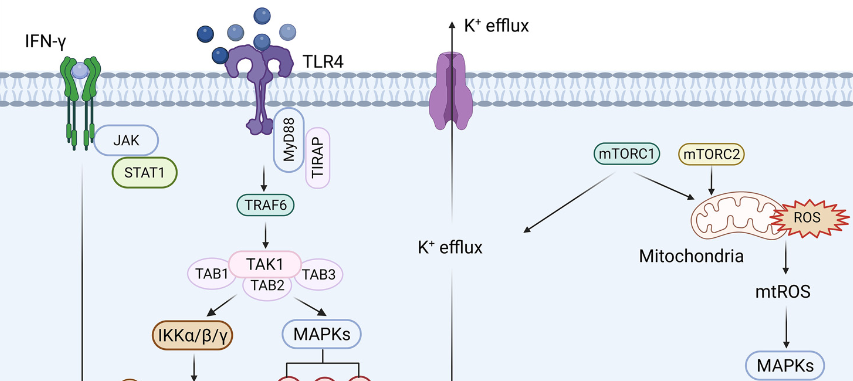Targeting toll-like receptor 4 (TLR4) and the NLRP3 inflammasome: Novel and emerging therapeutic targets for hyperuricaemia nephropathy
DOI:
https://doi.org/10.17305/bb.2023.9838Keywords:
Hyperuricaemia nephropathy, pathogenesis, inflammation, Toll-like receptor 4 (TLR4), nucleotide-binding oligomerization domain (NOD)-like receptor pyrin domain-containing 3 (NLRP3)Abstract
The clinical manifestation of hyperuricaemia, known as hyperuricaemia nephropathy, is relatively common. Its pathophysiology is largely based on chronic inflammation in circulatory and renal tissues. Toll-like receptor 4 (TLR4), a subclass of innate immune receptors, detects both pathogen-associated molecular patterns (PAMPs) and damage-associated molecular patterns (DAMPs), initiating inflammatory and immune responses that lead to the release of pro-inflammatory cytokines interleukin 1 beta (IL-1β) and tumor necrosis factor alpha (TNF-α). These cytokines are pivotal in renal inflammation, especially in conditions like hyperuricaemia, acute renal injury, ischemia-reperfusion injury, and acute renal failure. The nucleotide-binding oligomerization domain (NOD)-like receptor pyrin domain-containing 3 (NLRP3) inflammasome, an essential component of the innate immune signaling complex, plays a central role in inflammation. It finely regulates the activation of caspase-1 and the production and secretion of the pro-inflammatory cytokine IL-1β, mediating and amplifying the inflammatory cascade response. Activation of TLR4 indirectly promotes the assembly of the NLRP3 inflammasome by regulating the nuclear factor kappa B (NF-κB) signaling pathway, thereby amplifying the inflammatory process and playing a significant pro-inflammatory role in hyperuricaemia nephropathy. TLR4 and NLRP3 inflammasome are anticipated to be novel markers and therapeutic targets for assessing treatment efficacy and prognosis in hyperuricaemia nephropathy. This paper provides a comprehensive overview of the structural composition and biological functions of TLR4 and NLRP3 inflammasome and systematically reviews their relevance in the pathogenesis of hyperuricaemia nephropathy.
Citations
Downloads

Downloads
Published
Data Availability Statement
The data that support the findings of this study are available from the corresponding authors upon reasonable request.
Issue
Section
Categories
License
Copyright (c) 2023 Chao Zhang, Yanlang Yang

This work is licensed under a Creative Commons Attribution 4.0 International License.
How to Cite
Accepted 2023-11-13
Published 2023-12-01









